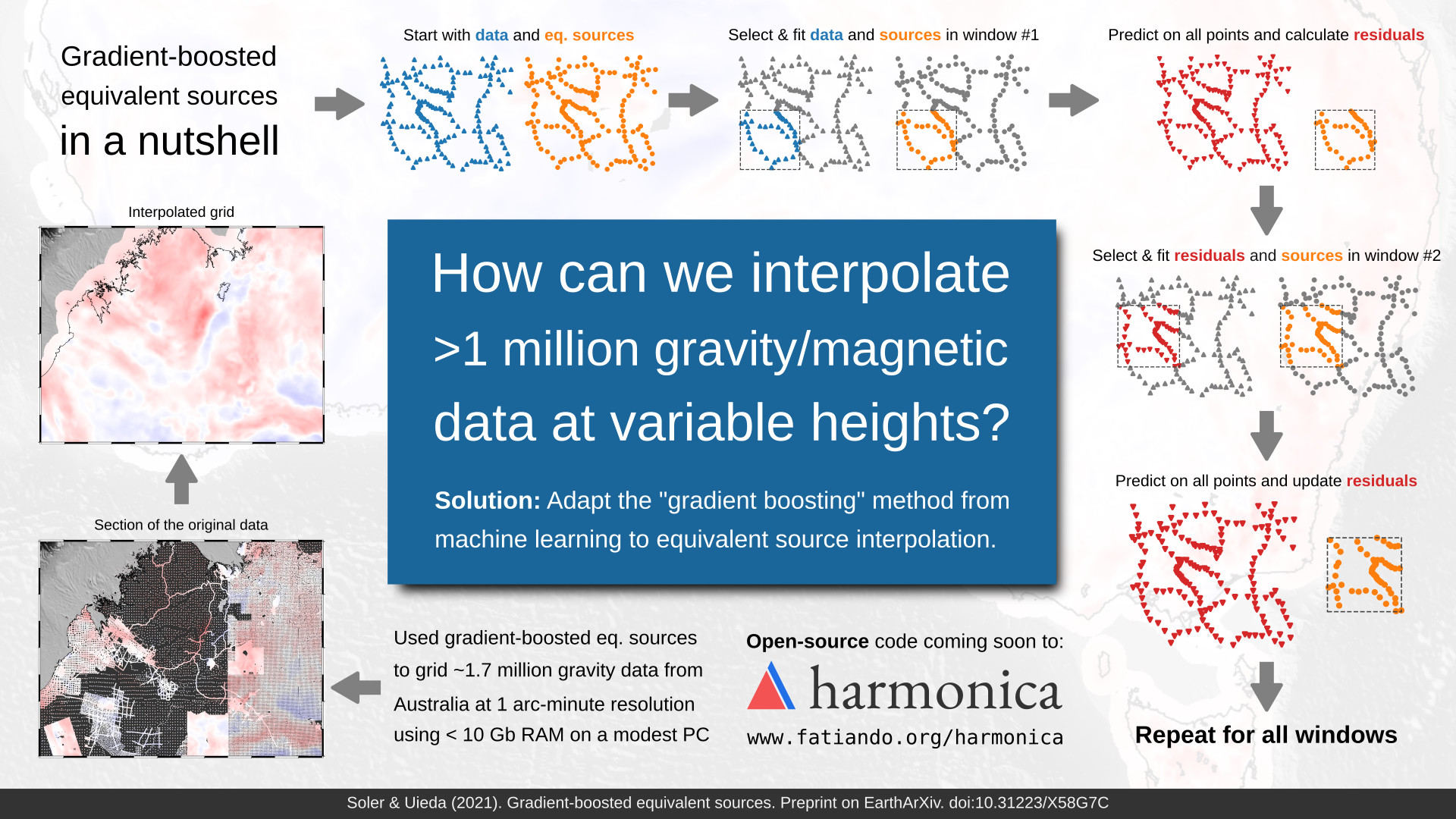Gradient-boosted equivalent sources
Info
- Journal: Geophysical Journal International
- Version of record: 10.1093/gji/ggab297
- Preprint server: EarthArXiv
- Preprint: 10.31223/X58G7C
- Source code: compgeolab/eql-gradient-boosted
- Supplement: 10.6084/m9.figshare.13604360
About
We present the gradient-boosted equivalent sources: a new methodology for interpolating very large datasets of gravity and magnetic observations even on modest personal computers, without the high computer memory needs of the classical equivalent sources technique. This new method is inspired by the gradient-boosting technique, mainly used in machine learning solutions.

Abstract
The equivalent source technique is a powerful and widely used method for processing gravity and magnetic data. Nevertheless, its major drawback is the large computational cost in terms of processing time and computer memory. We present two techniques for reducing the computational cost of equivalent source processing: block-averaging source locations and the gradient-boosted equivalent source algorithm. Through block-averaging, we reduce the number of source coefficients that must be estimated while retaining the minimum desired resolution in the final processed data. With the gradient boosting method, we estimate the sources coefficients in small batches along overlapping windows, allowing us to reduce the computer memory requirements arbitrarily to conform to the constraints of the available hardware. We show that the combination of block-averaging and gradient-boosted equivalent sources is capable of producing accurate interpolations through tests against synthetic data. Moreover, we demonstrate the feasibility of our method by gridding a gravity dataset covering Australia with over 1.7 million observations using a modest personal computer.
How to cite
Soler, S.R. and Uieda, L. (2021). Gradient-boosted equivalent sources. Geophysical Journal International. doi: 10.1093/gji/ggab297